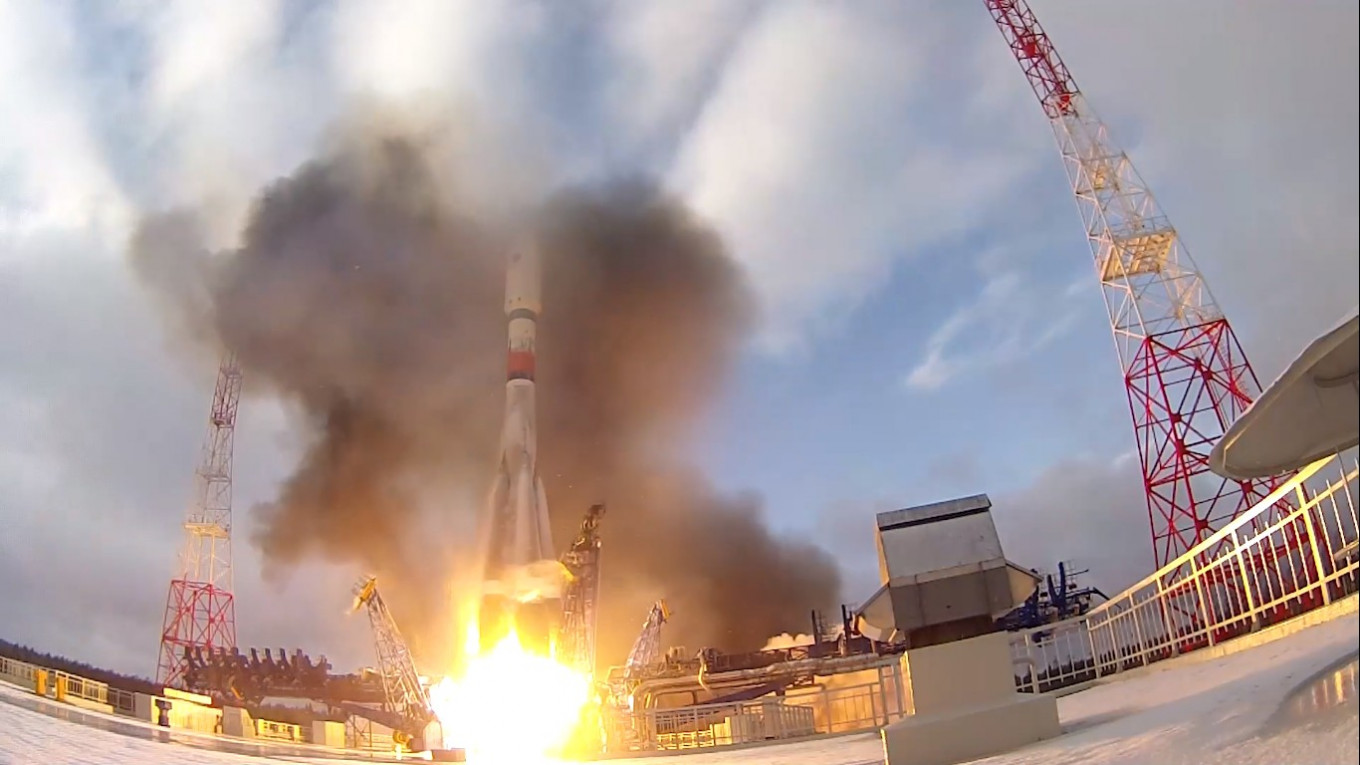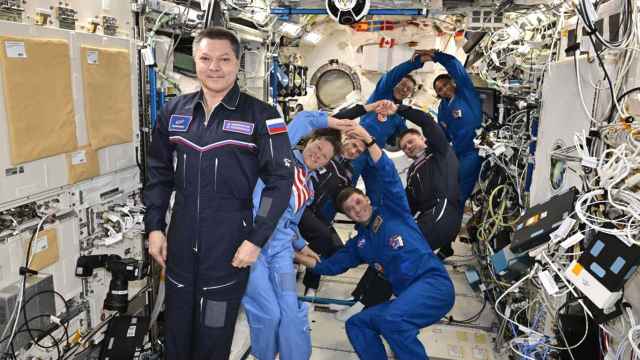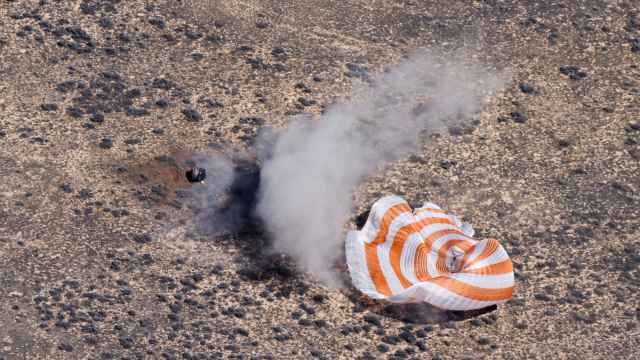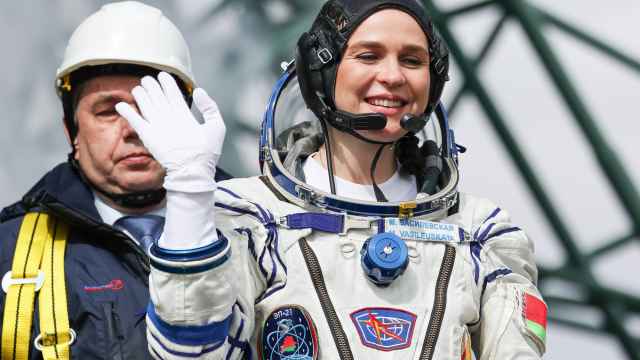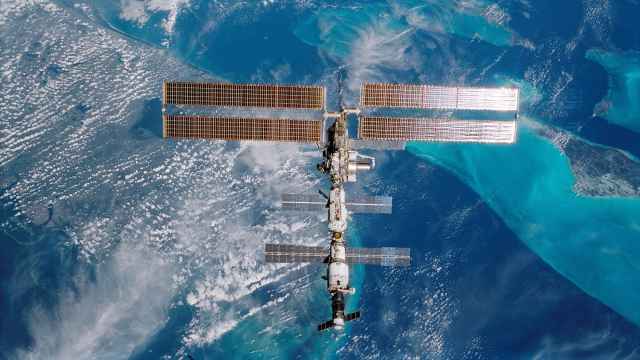A three-man crew docked successfully at the International Space Station Thursday, leaving behind a planet overwhelmed by the coronavirus pandemic.
Russian space agency Roscosmos said the Soyuz MS-16 capsule "docked successfully" in a statement on its website.
Anatoly Ivanishin and Ivan Vagner of Roscosmos and NASA's Chris Cassidy reached the ISS at 1413 GMT, just over six hours after blasting off from the Baikonur Cosmodrome, where COVID-19 caused changes to pre-launch protocol.
Usually the departing crew faces questions from a large press pack before being waved off by family and friends.
Neither was possible this time round because of travel restrictions imposed over the virus, although the crew did respond to emailed questions from journalists in a Wednesday press conference.
Cassidy, 50, admitted the crew had been affected by their families not being unable to be in Baikonur, Russia's space hub in neighboring Kazakhstan, for their blastoff to the ISS.
"But we understand that the whole world is also impacted by the same crisis," Cassidy said.
Astronauts routinely go into quarantine ahead of space missions and give a final press conference at Baikonur from behind a glass wall to protect them from infection.
That process began even earlier than usual last month as the trio and their reserve crew hunkered down in Russia's Star City training centre outside Moscow, eschewing traditional pre-launch rituals and visits to the capital.
The next crew to return to Earth from the ISS will be flying to their home countries on April 17 via Baikonur, rather than Karaganda in central Kazakhstan as usual, as part of new travel measures related to the pandemic.
Tips on self-isolation
The ISS typically carries up to six people at a time and has a livable space of 388 cubic meters (13,700 cubic feet) — larger than a six-bedroom house according to NASA.
Those dimensions will sound enviable to many residents of Earth, more than half of whom are on various forms of lockdown as governments respond to Covid-19 with drastic measures.
In recent weeks, astronauts and cosmonauts on the ISS and on Earth have been sharing tips on coping with self-isolation.
In a piece for the New York Times last month, NASA's Scott Kelly said his biggest miss during almost a year in space was nature — "the color green, the smell of fresh dirt and the feel of warm sun on my face."
During his time aboard the ISS he "binge-watched 'Game of Thrones' — twice" and enjoyed frequent movie nights with crewmates, he wrote.
Two-time cosmonaut Sergey Ryazanskiy has become the face of a 10-week challenge that will see participants post videos of themselves completing physical exercises as part of a competition aimed at both youth and adults.
The initiative that Roscosmos is backing aims "to support people in a situation of isolation, instil a healthy lifestyle and thoughts through regular sports, without going out in public places," Ryazanskiy said in a video promoting the "Cosmos Training" challenge.
The launch of Ivanishin, Vagner and Cassidy marks the first time a manned mission has used a Soyuz-2.1a booster to reach orbit, after Roscosmos stopped using the Soyuz-FG rocket last year.
The newer boosters have been used in unmanned launches since 2004.
The upgraded rocket relies on a digital flight control system rather than the analogue equipment used in prior Soyuz models.
Russia and Baikonur have enjoyed a near decade-long monopoly on manned missions to the ISS since NASA wound up its Space Shuttle program in 2011.
But that may change as early as next month when Elon Musk's SpaceX could be ready to launch a two-man crew to the orbital lab, NASA said in March.
NASA said that the tech entrepreneur's company and the space agency are targeting "mid-to-late May" for a test launch that will transport NASA astronauts Bob Behnken and Doug Hurley to the ISS in SpaceX's Crew Dragon capsule.
The International Space Station — a rare example of cooperation between Russia and the West — has been orbiting Earth at about 28,000 kilometers per hour (17,000 miles per hour) since 1998.
A Message from The Moscow Times:
Dear readers,
We are facing unprecedented challenges. Russia's Prosecutor General's Office has designated The Moscow Times as an "undesirable" organization, criminalizing our work and putting our staff at risk of prosecution. This follows our earlier unjust labeling as a "foreign agent."
These actions are direct attempts to silence independent journalism in Russia. The authorities claim our work "discredits the decisions of the Russian leadership." We see things differently: we strive to provide accurate, unbiased reporting on Russia.
We, the journalists of The Moscow Times, refuse to be silenced. But to continue our work, we need your help.
Your support, no matter how small, makes a world of difference. If you can, please support us monthly starting from just $2. It's quick to set up, and every contribution makes a significant impact.
By supporting The Moscow Times, you're defending open, independent journalism in the face of repression. Thank you for standing with us.
Remind me later.


